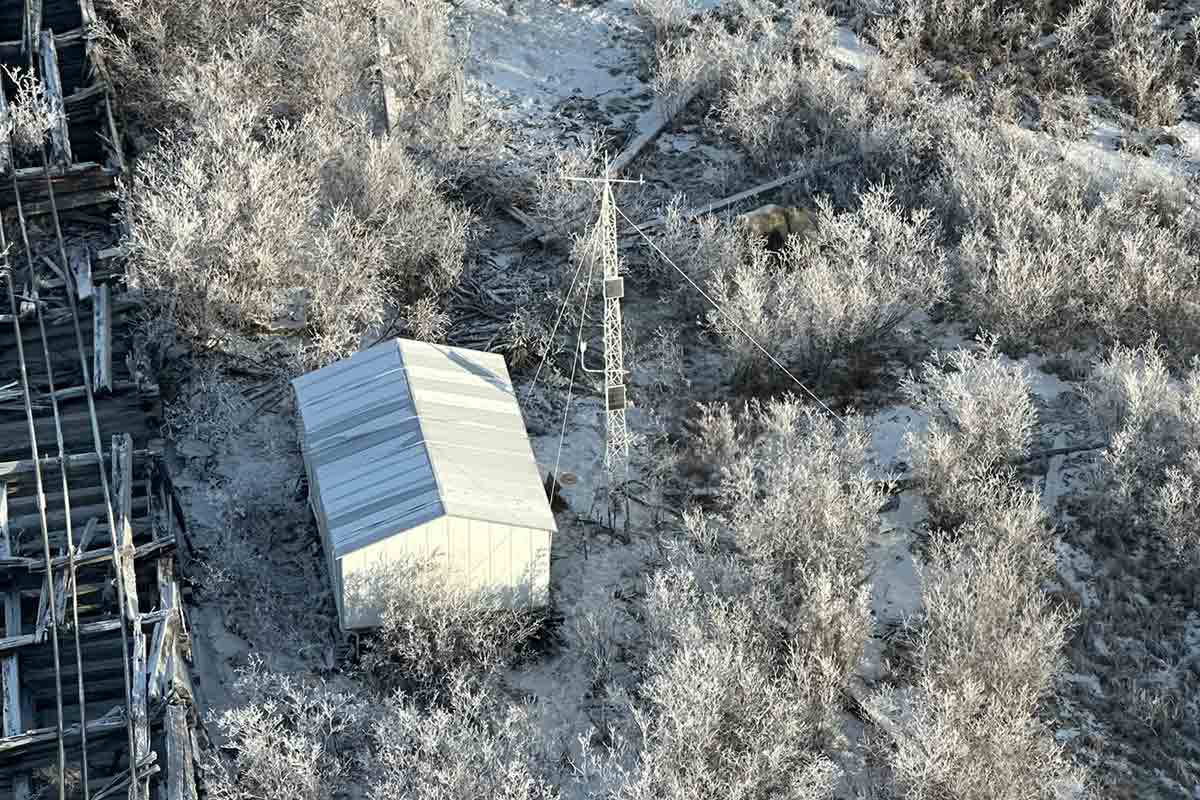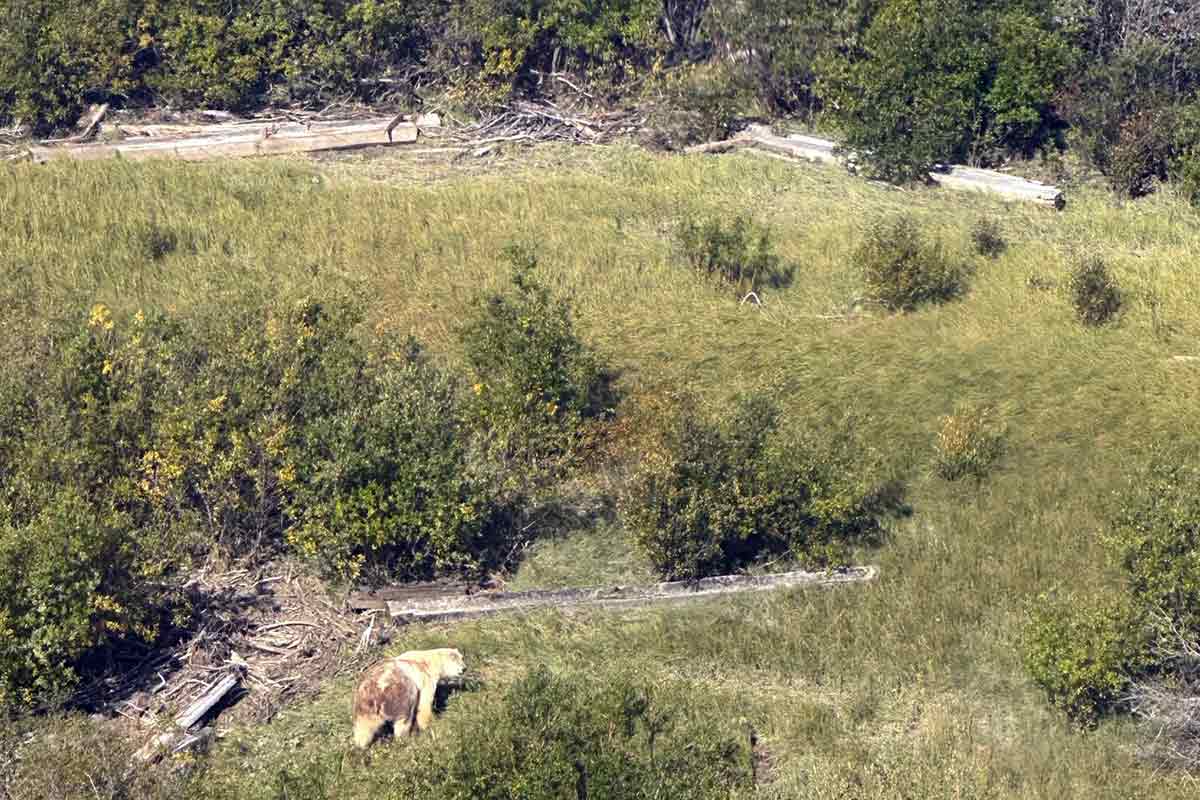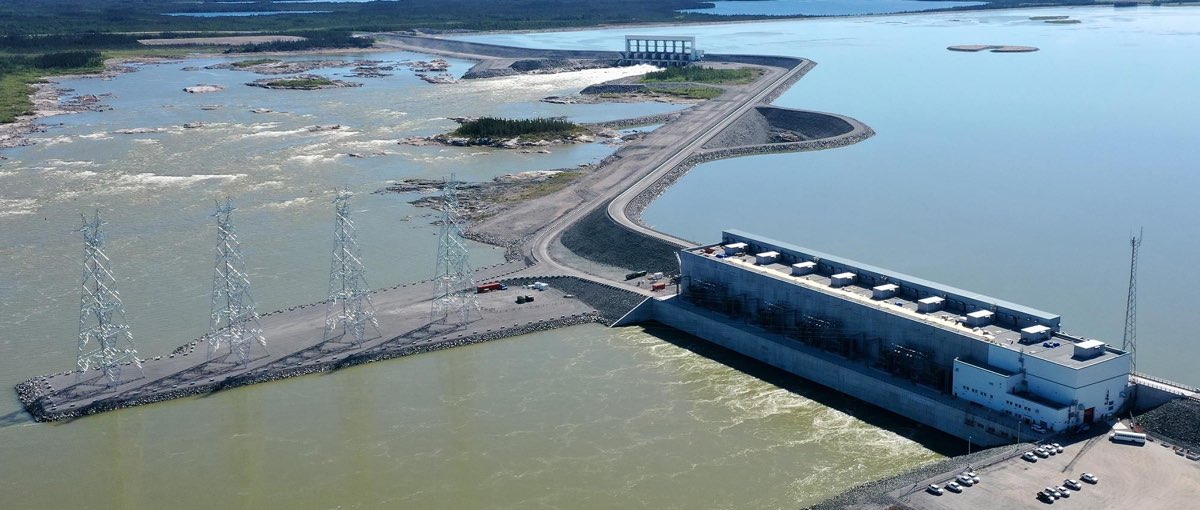Bearing it: wildlife hazards while on the job up north
At the risk of reinforcing a Canadian stereotype, some of Manitoba Hydro’s most northern staff deal with an unexpected on-the-job hazard: polar bears.

An aerial view of a Manitoba Hydro work site — can you spot the polar bears?
Manitoba Hydro’s operations span from right next to the US border all the way up to the town of Churchill, near Hudson Bay — a place so far up north that it and the surrounding area are renowned for polar bear tourism. And though they’re large, majestic creatures, polar bears are very smart and very dangerous, so utility crews do their best to avoid them at all costs.
Every fall, the polar bears of the Hudson Bay population congregate along its shores waiting for winter pack ice. Once formed, these bears head out onto the ice until the following June or July to hunt their main food source: seals. The exception to this rule is pregnant females — they den on the land from November to March before venturing onto the ice with their cubs.
Staff from Manitoba Hydro’s Hydrometric Section of its Waterway Approvals and Monitoring Department work in some of the most remote and beautiful areas the province of Manitoba has to offer — including some of these polar bear hotspots. For example, these employees operate Manitoba Hydro’s real-time water level and weather station at Port Nelson. The port is about 125 miles north of Churchill, on the boundary of Wapusk National Park (itself a polar bear hotspot) and at the mouth of the mighty Nelson River. Every two months, a crew visits this site by helicopter to take equipment calibration measurements and perform required maintenance.

Polar bears are sometimes spotted even in warmer months.
Manitoba Hydro safety protocols require a helicopter to circle the work or landing area at least twice before landing, with all eyes looking for any signs a bear may be present.
If one or more bears are spotted, the crew moves elsewhere and reschedules a future visit. Still, in case of an unlikely close-up encounter with a polar bear, Manitoba Hydro field staff in the area receive annual bear awareness and shotgun proficiency training — and firearms are standard personal protective equipment when working in coastal areas.
Even in polar bear country, an encounter is quite rare. In over fifty years of field monitoring activities, not once has a Manitoba Hydro employee had to discharge a firearm in self-defense.
But, as with any other potential safety hazard, proper training and personal protective equipment is paramount.
Because an on-the-job injury from wildlife would be unbearable.
